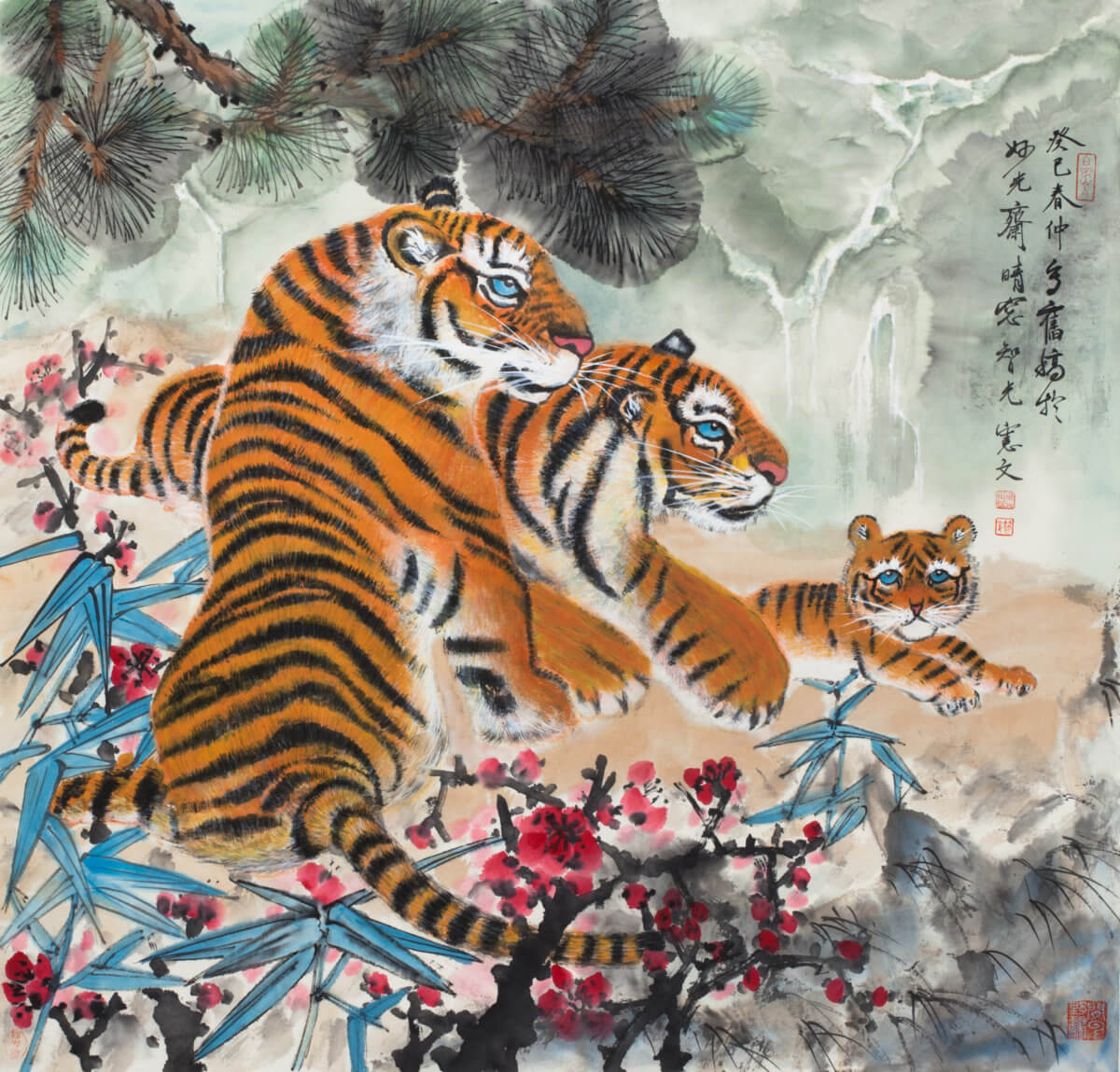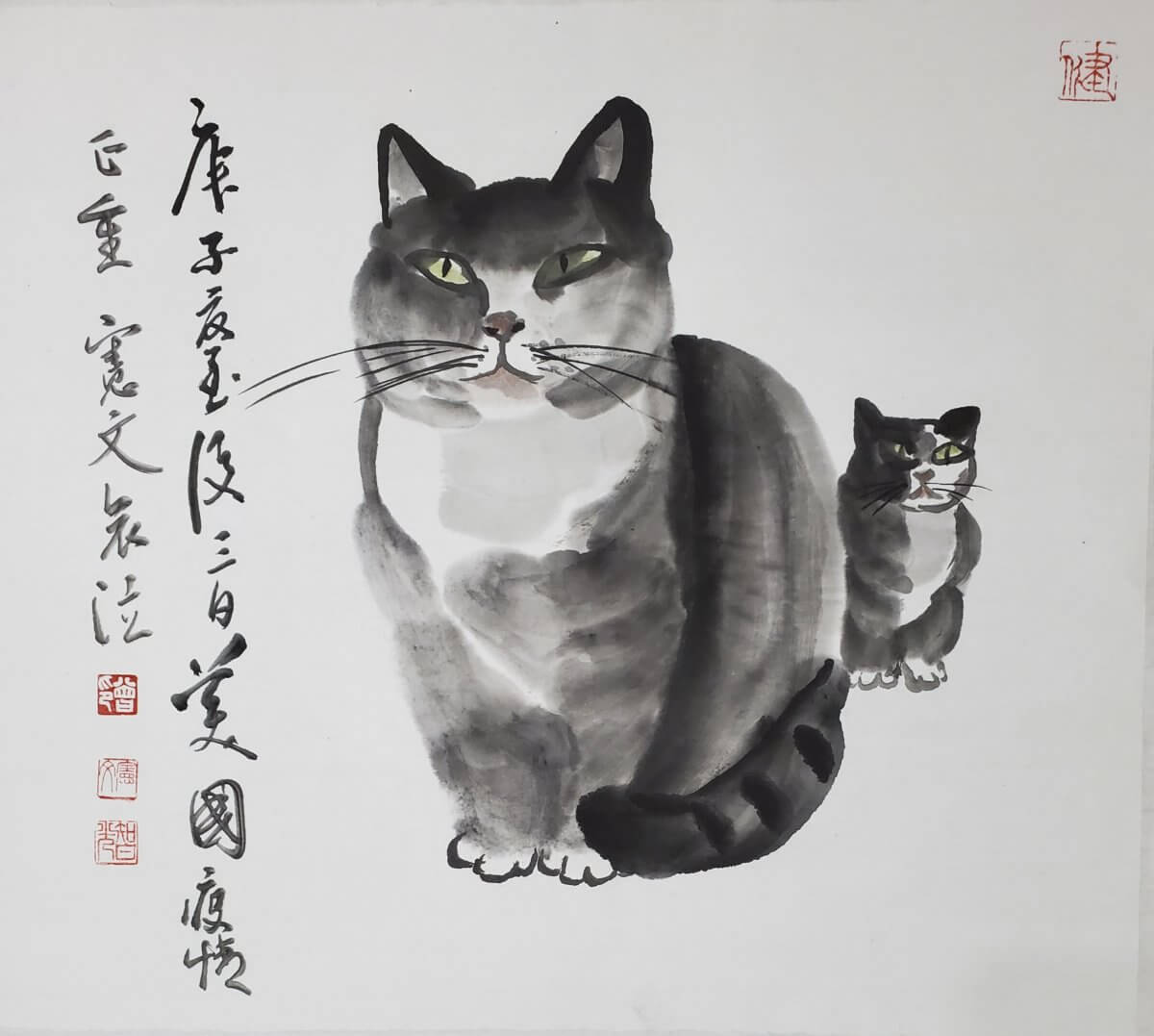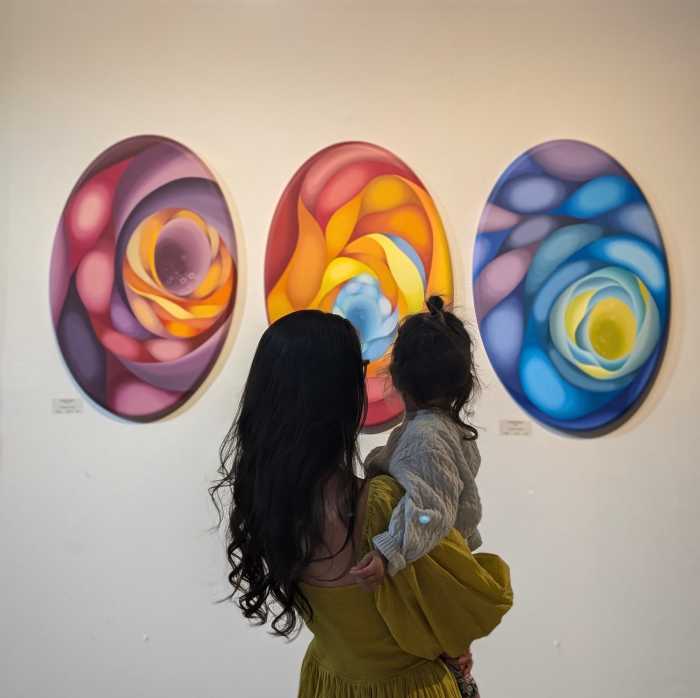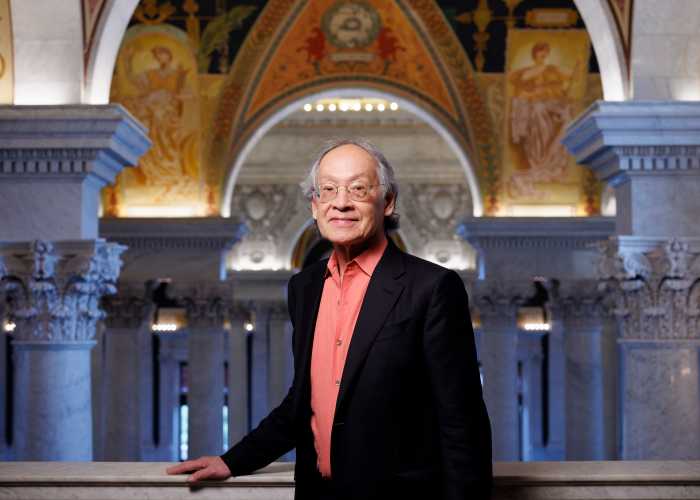It’s the Year of the Tiger! Be sure to share joy and love during this festive time. Chinese New Year falls on Tuesday, Feb. 1, this year, and celebrations culminate with the Lantern Festival on Feb. 15.
Artist and calligrapher Simon Zeng, a longtime Flushing resident, has kept the beloved traditions of his native land and looks forward to another Lunar New Year. He’s hoping it’s a lucky one.
“The dawn is ahead,” he said. “The Year of the Tiger will come in a few days, and I hope our world will recover to peace and prosperity.”
Since moving into his home studio in Flushing almost 26 years ago, Zeng has enjoyed living and working in that vibrant area, which reminds him of his childhood home in the historic town of Jinzhou District of Dalian, in the Liaoning Province of southern China.
As a tribute to each Chinese New Year, the artist has been creating symbolic works depicting different animals. Describing his dynamic creation for 2022 — a watercolor painting titled “Tiger family” (brush, ink, color on paper 27” x 27”) – Zeng said the pattern on the tiger’s forehead constitutes “a king character, which is a symbol of majesty and power.”

“In Chinese legends, tigers are believed to be extremely powerful animals that ward off three major disasters in the family: fire, theft and evil,” Zeng explained. “Tiger paintings are often hung on the wall facing the gate, so that demons are afraid to enter. Even in contemporary China, some children wear tiger head hats and shoes to ward off evil spirits, and some people sleep on tiger head pillows to make themselves stronger. In the Year of the Tiger, children have the word ‘King’ written in red on their heads, which seems to boost their energy and vitality.”
Zeng added, “People believe in mascots very much, and tiger talismans and flags painted with the shape of a tiger, are often treasures to frighten the enemy. And people will use the god Humen, to pray for blessings and ward off evil spirits.”
Across Queens and the rest of New York City, excited families, like Zeng’s, are getting ready to celebrate a new year. Usually, two fish dishes are prepared, one for dinner and one for the next day (considered “surplus for the new year”), for Chinese New Year’s Eve, which falls on Jan. 31. And the orange is one of the most popular Chinese New Year foods.
When they meet during this happy time, Chinese people greet one another with lucky sayings and phrases to wish each other health, wealth and good fortune. “Gong hei fat choy” (a Cantonese saying that delivers a wish of prosperity) is usually spoken in Hong Kong, Guangdong Province, and places nearby. Nowadays, you can hear this greeting in many Chinatowns.
If you’re celebrating the new year, you’re probably greeting neighbors and friends with 虎年大吉 — “Wishing you luck in the Year of the Tiger (hu).” [In Mandarin: hǔ nián dà jí /hoo-nyen daa-jee / and in Cantonese: fu nin dai gat].
Young Simon was already painting and writing calligraphy at age 12, learning the ancient art forms passed down by the masters. He even won national awards. But his creativity was stifled.
“At that time, China was going through a very tough phase when people weren’t allowed to engage with the traditional culture, and a lot of books and artworks were destroyed due to political reasons,” Zeng recalled.
Like many Queens artists, Zeng said his pandemic experience has been quite challenging. Yet it hasn’t stopped him from doing what he loves.
“I have been staying home with my family, my children are taking classes online, and many of my art exhibitions have been canceled,” he noted. “But I created artworks for more than a year, praying every day that the epidemic will disappear soon.”
Those paintings reflect the emotions he’s experienced as COVID-19 continues. According to Zeng, “The cats” is inscribed with calligraphy, meaning: “In the summer of 2020, the pandemic in the United States is serious. I feel sad and weep.”


“The Amaryllis” is inscribed with calligraphy, meaning: “The vaccine was successfully invented during the Christmas period of 2020, and is on its way. I sincerely wish the vaccine to be delivered smoothly, and human health and peace.”
Zeng hopes this mighty Year of the Tiger brings better results.
“I sincerely hope that in this coming Year of the Tiger, with the help of his powerful implication, the pandemic will disappear quickly, people will return to normal life order, and the world will be peaceful and prosperous,” Zeng said.




































